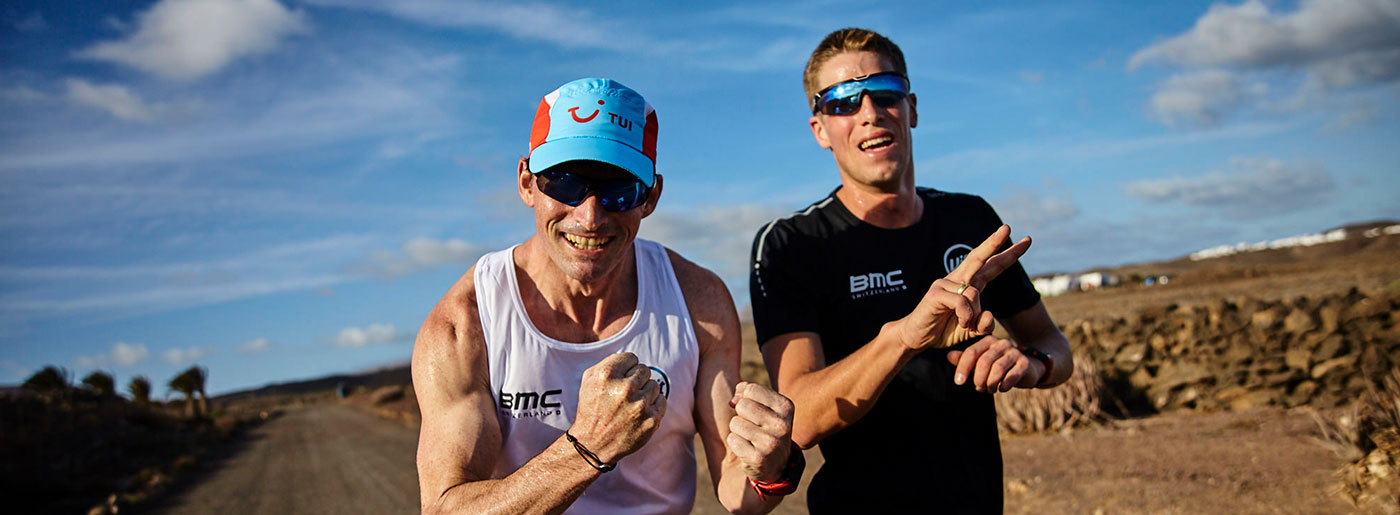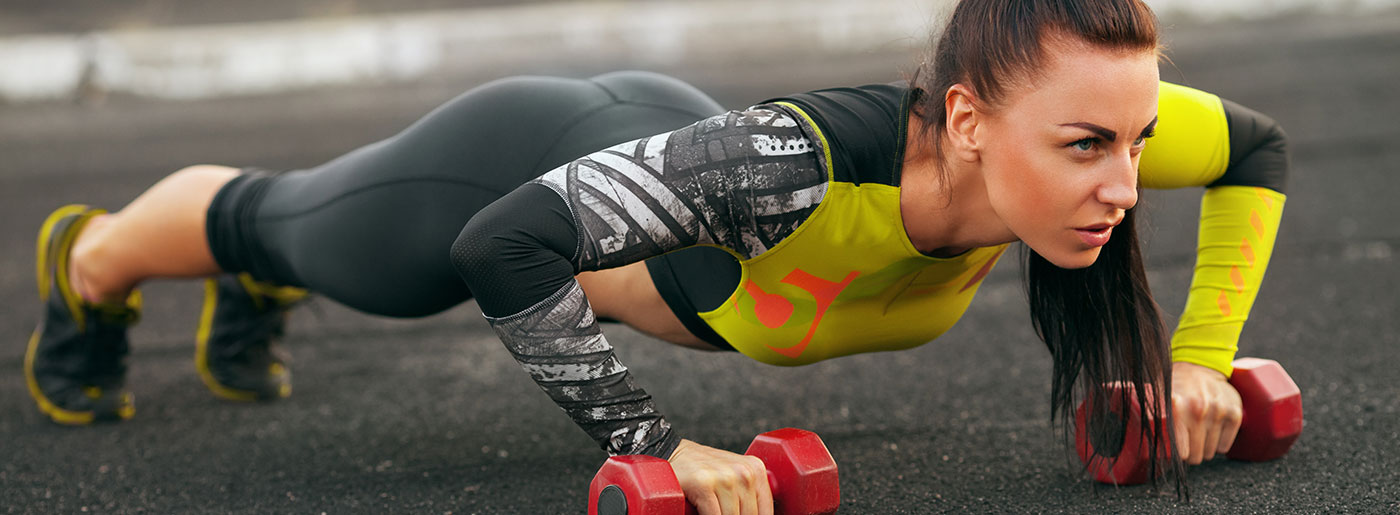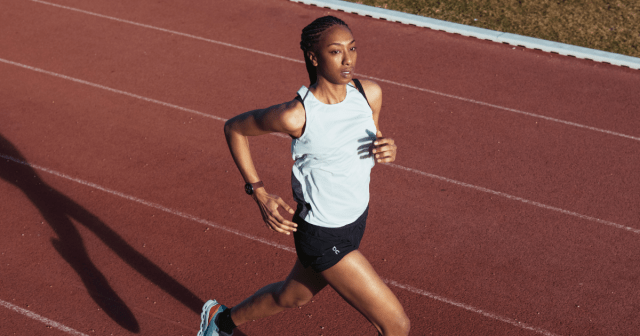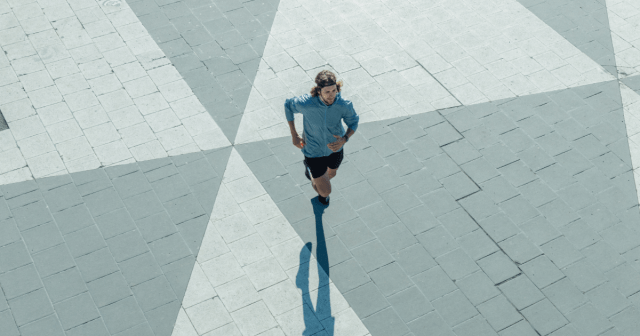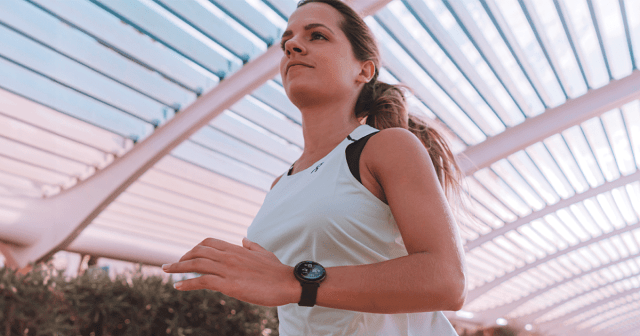Whether it’s during an easy run, a seemingly impossible long ride, or at brunch with non-athlete friends, runners and cyclists alike love debating the timeless question: When it comes to cycling vs. running, who’s the toughest type of athlete around?
Runners can argue that they can bust out blazing fast, puke-inducing intervals on the track, or they can opt for ultramarathons, running for up to 24 hours at a time. Meanwhile, cyclists can argue that they can ride that same distance in less than half the time – plus a few thousand feet of climbing.
We see the appeal of both disciplines, and as an attempt to settle the debate once and for all, we asked exercise physiologist and founder of City Coach Multisport Jonathan Cane to answer all your burning cycling vs. running questions.
Photo credit: James Mitchell
I want to lose weight. Should I be running or riding?
“Ultimately, you should do whichever one you’ll stick with – but there are a few pros and cons to each. One advantage to cycling is that it’s less orthopedically stressful, and beginners can likely do it longer without risking injury or experiencing too many aches and pains. So, if you can sustain it longer, that’s a checkmark in the cycling column.
Just go with whichever you’ll be more likely to sustain. Or why not do both?
On the other hand, when running, you’re supporting your body weight, which can be an advantage for running. Plus, you use a larger muscle mass when running vs. cycling, so you likely burn a few more calories at any given perceived exertion. But I’m happy to put aside the theoretical arguments and go with whichever you’ll be more likely to sustain. Or why not do both?”
I’m a runner and I want to start CYCLIng. What do I need to know to get started?
“You need a serviceable – but not necessarily state-of-the-art – bike that fits you properly. Jamming onto your little sister’s bike because she doesn’t use it anymore isn’t doing you any favors if it can’t accommodate your body and forces you to sit too low. And, of course, you need a helmet, gloves – to avoid losing skin in case of an accident – and a few basic tools.”
I’m a cyclist and I want to start running. What do I need to know?
“You need a decent pair of running shoes that are appropriate for you – not for your runner friend, but you. And you need to know that even if you have the cardiovascular fitness to support running many miles, from an orthopedic point of view, you’re not ready to do so. Increases in running volume should be more conservative than in cycling.”
OK, I’m doing both and I’m ready to combine them. I want to do a duathlon! Any tips?
“Take your helmet off before you head out for the run! Aside from that, realize that putting the two disciplines together is a little trickier than you might realize.
By doing some brick workouts – running right after riding – during training, you’ll be better prepared for race day.
In a run-bike-run duathlon, the second run will have you feeling like someone grafted an alien’s legs on your body. By doing some brick workouts – running right after riding – during training, you’ll be better prepared for race day. But that second run always feels a little cruddy for the first mile or so. And remember that duathlon is one big race, rather than three individual segments. Don’t ride so hard that you can’t do the second run!
Don’t think of the transition as a place to relax and recover. Speed through your transitions.
When it comes to race day, remember that transitions are “free speed.” Don’t think of the transition as a place to relax and recover. Speed through your transitions. Be organized and methodical. Rehearse. As for your legs, doing bricks will help get you acclimated but won’t eliminate the horror of the first mile of the second run. So focus on your form, run tall, and keep your cadence up rather than trying to use long strides.
I sometimes suggest that my runners focus on just one aspect of their form. For instance, only think about lifting your knees as you run. By doing so, not only are you likely improving your running form, but you’re also not thinking as much about how lousy the rest of your body feels. And if all else fails, look around. The runners next to you are likely feeling the same thing you are – and misery loves company!”
How can cyclists benefit from adding running to their workout routine?
“Running is simple. It’s not easy, but it’s simple. It takes very little prep or equipment. When you’re traveling for a weekend and don’t want to pay the airline’s extortion fees – er, bike transporting fees – you can always run.”
And how can runners benefit from adding cycling to their workout routine?
“If you’re feeling a little achy from running, cycling is a great, no-impact alternative. Your body is more likely to tolerate a two- or three-hour ride than a similarly timed run. Plus, it works on some complementary muscles.”
Settle this debate once and for all: Who’s the toughest, runners or cyclists?
“Triathletes!”
In the spotlight

Jonathan Cane
If you liked this post, don’t forget to share so that others can find it, too.
Please note that the information provided in the Polar Blog articles cannot replace individual advice from health professionals. Please consult your physician before starting a new fitness program.
